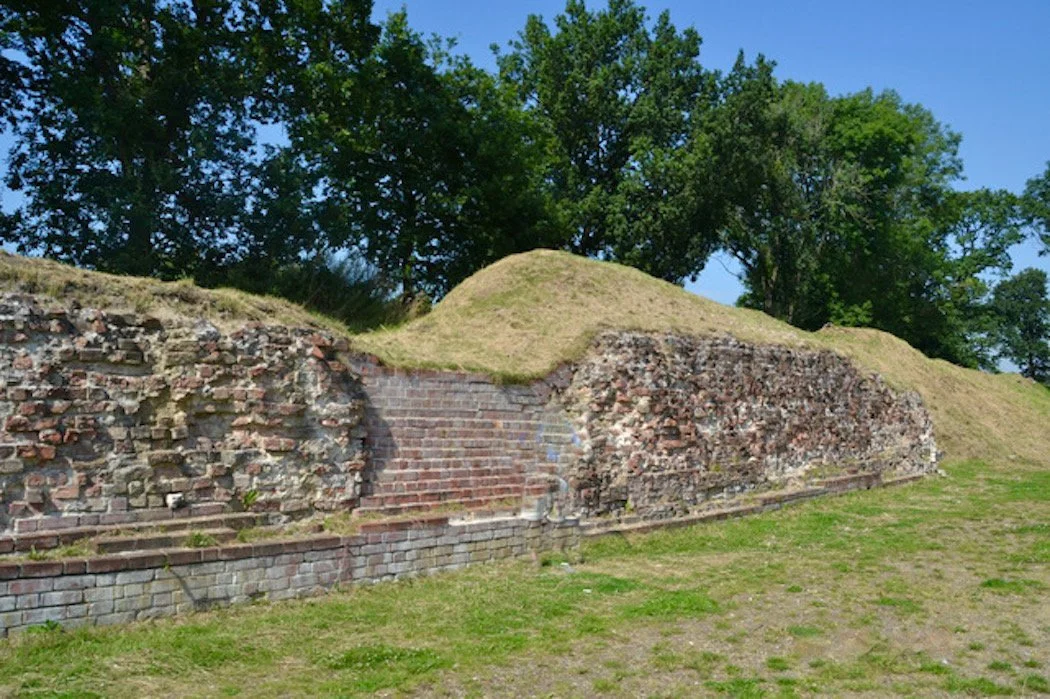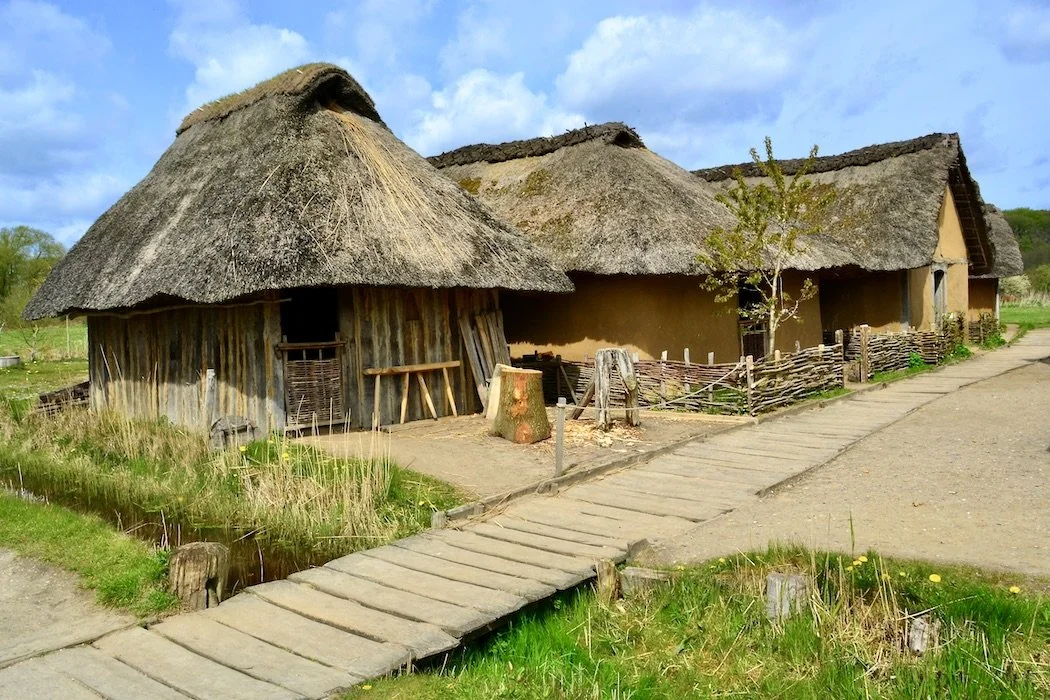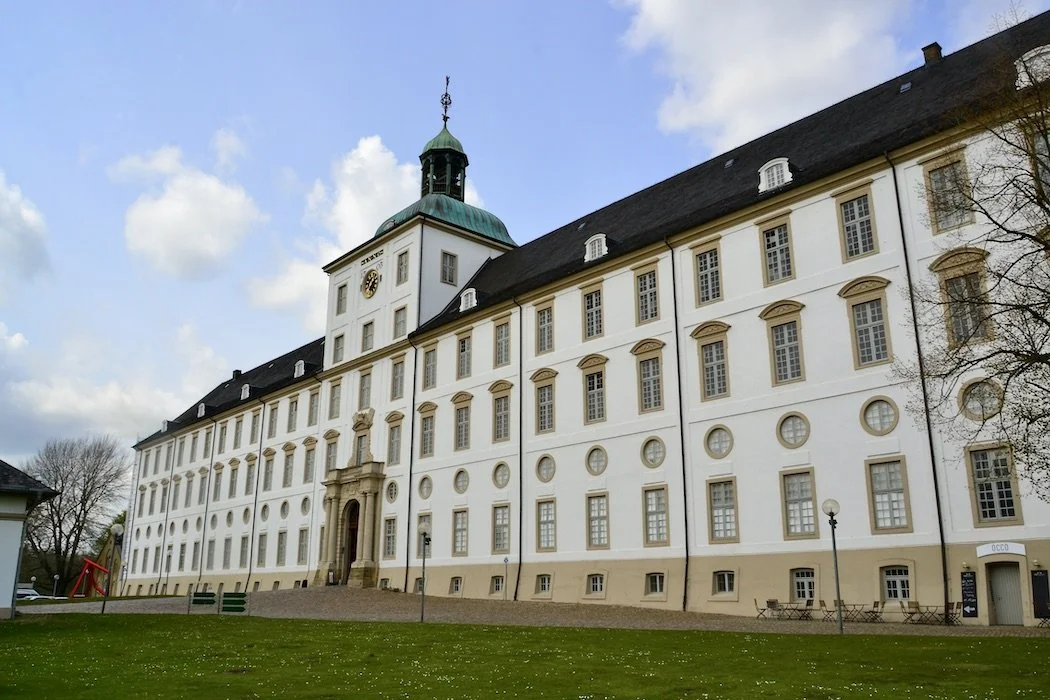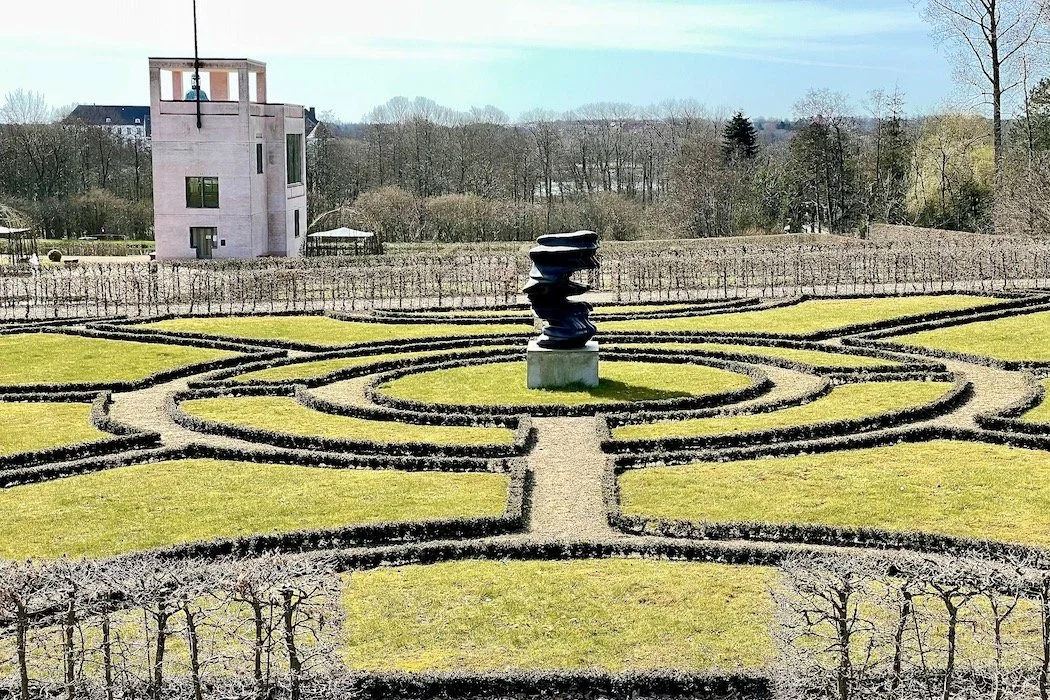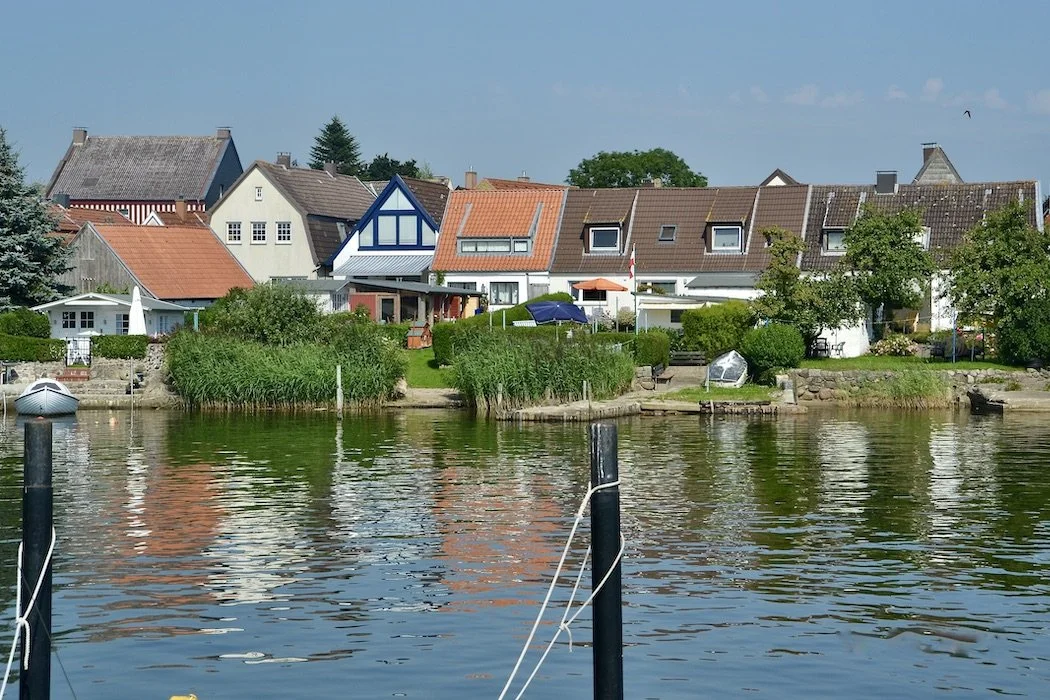Don't disregard remarkable Schleswig
Schleswig seen from across the Schlei fjord
“The colors live a remarkable life… after they have been applied to the canvas.” — Edvard Munch
The northeastern German city of Schleswig on the Schlei fjord began remarkably, as one of the most important Viking settlements and trading centers, the harbor-side “colony on the heath” Haithabu (Danish: Hedeby). Over 1200 years ago, Danes, Frisians, Saxons, and Slavs clashed in this border region between Scandinavia and Central Europe, so the Danish kings began fortifying their southern frontier with the Danevirke, a defensive barrier, “to protect the entire kingdom”. Important trade routes met here at the narrowest point between the North and the Baltic Seas, where they crossed the north-south Ox Route. They built a series of earthworks, brick walls, and ditches extending 30 km (18.6 miles) westward from the fjord to the River Treene, which forms the remainder of the boundary by flowing west and emptying into the North Sea.
After numerous attacks, Haithabu was burned to the ground by Slavs in 1066, forcing the Vikings to relocate 3 km (2 miles) away to present-day Schleswig. The ancient settlement has been unearthed and partially reconstructed as an archeological site on the historic town’s location by a creek flowing into the harbor. The area is still surrounded by Harold Bluetooth’s original half-circle fortifications.
Even now, everything in Schleswig, the oldest town in Schleswig-Holstein State, is a legend from one era or another. The seagulls on Gull Island in the fjord are said to be the followers of King Abel, who murdered his brother Eric IV of Denmark in 1250 to take the throne. More recently, several enigma machines recovered from U-boats scuttled in the Baltic at the end of WWII were exhibited in Gottorf Castle.
The grand 16th century Castle Gottorf sits completely surrounded by water and conceals treasures spanning the centuries, from a stunning chapel and banquet room to noteworthy artworks. Now the Schleswig-Holstein State Museum, it houses paintings from Lucas Cranach through Art Nouveau and faïence from across the Baltic region. The formal Baroque gardens were authentically restored and the famous Gottorf Globe, the world’s first planetarium, displays the continents and seas as they were thought to look in the 1600s.
Schleswig’s landmark, St. Peters Cathedral, built in 1005, is visible from afar. The newer steeple is worth climbing for a breathtaking view over the city and fjord, while inside, the exquisite Bordesholm Alter is adorned with 400 carved figures that narrate the Passion. In the old city center, the classical Town Hall rests on the foundations of the former Graukloster Monastery and encompasses the original Gothic hall. From there, it’s a short walk to the ancient fishermen’s settlement on the fjord. Named Holm, meaning little island, this enclave was connected to land by a bridge until 1933. Small cottages encircle the chapel and cemetery in this quintessentially picturesque part of town. Special trade rights were bestowed on Holm’s residents already in the 11th century, and the charm of bygone days lives on in alluring tiny craft shops and cafés.
A long promenade leads around the fjord’s end, through the pretty Königswiesen Park, and along a beach to the sailboat harbor. In this part of town, modern living alternatives vary from the remarkable high-rise Viking Tower to resort-like homes with water access for boat docks.
Don’t miss:
A boat ride on the Schlei.
Serendipity:
Locals along the way- Being noticed observing a woman tending a grave in Holm cemetery and being invited in for a look and a chat.
Lunch Tip:
Zur Schleimöve in Holm for excellent fish dishes.
Subscribe for inspiration to have my posts drop directly into your inbox. *If you enjoyed what you read, please share this post with like-minded travelers.*
*All photographs are mine, taken with my Nikon D3100 or iPhone 12 Pro.*



